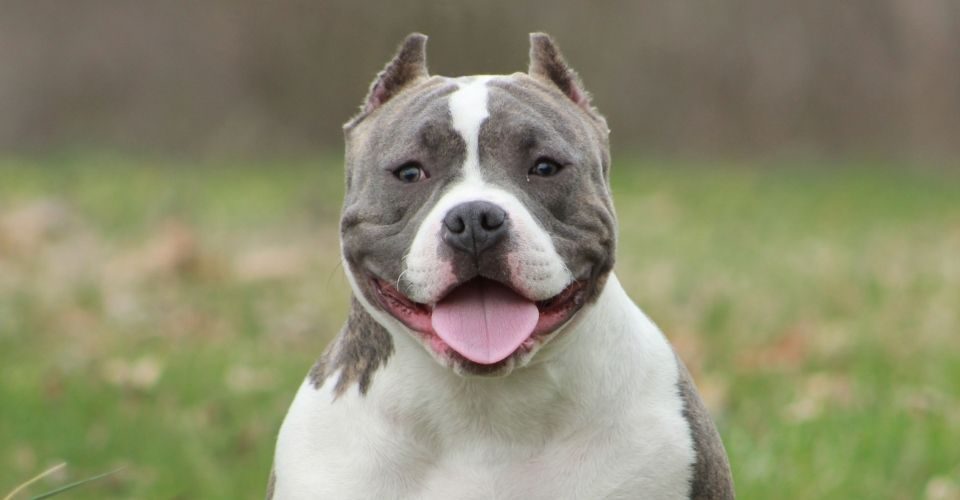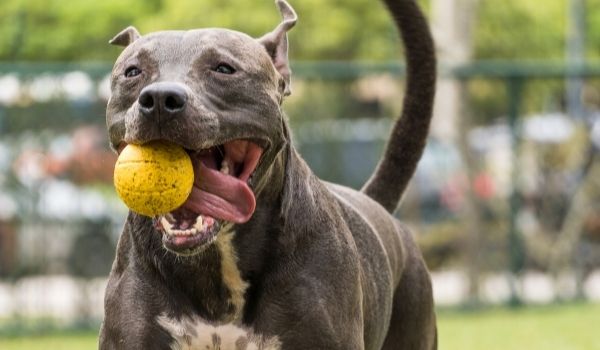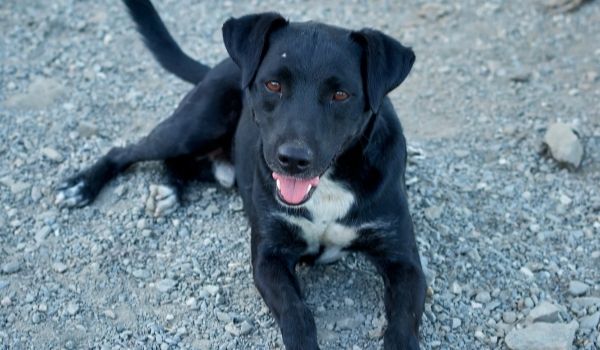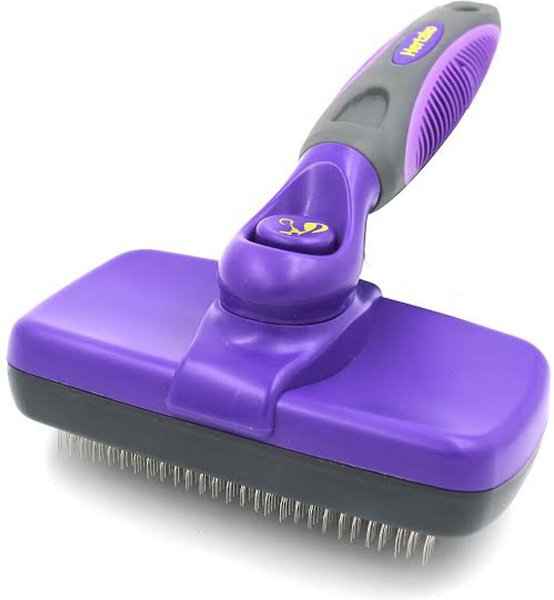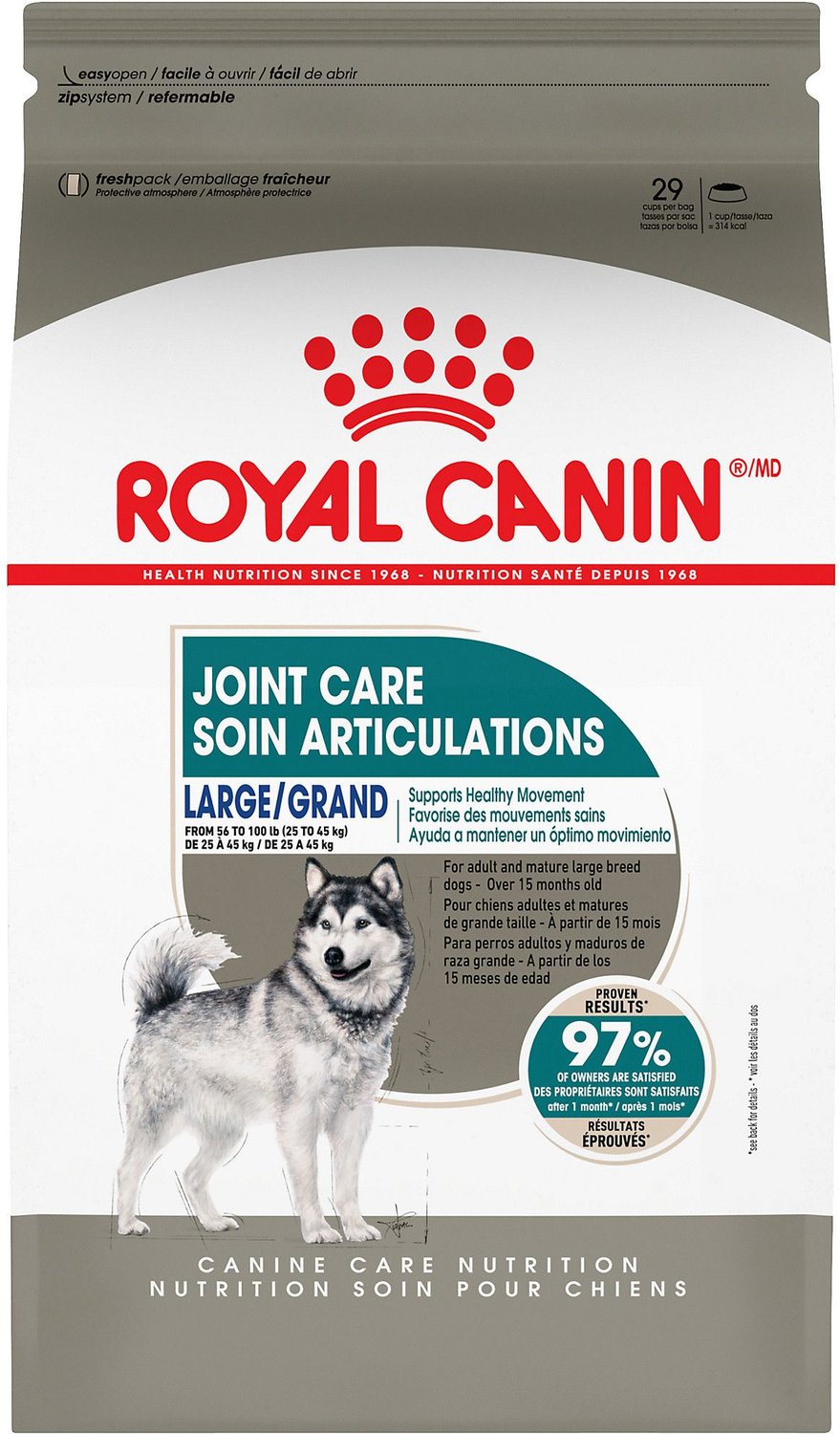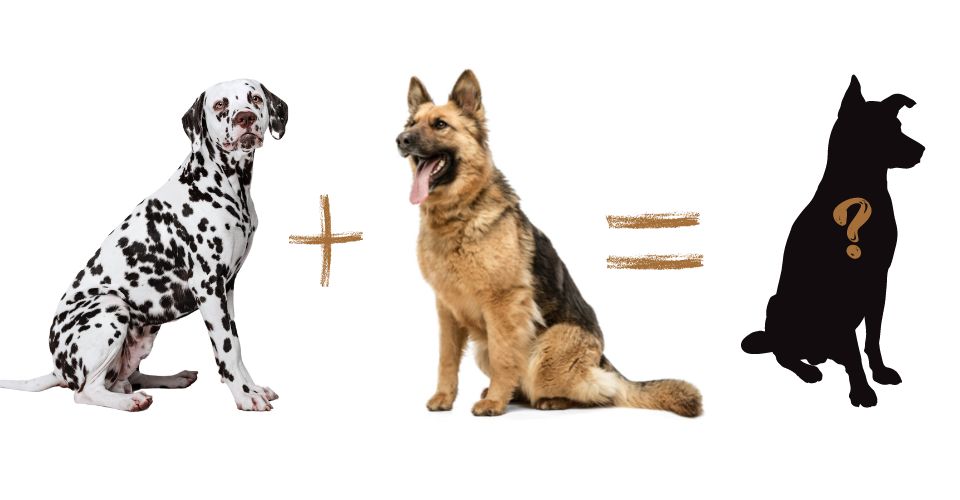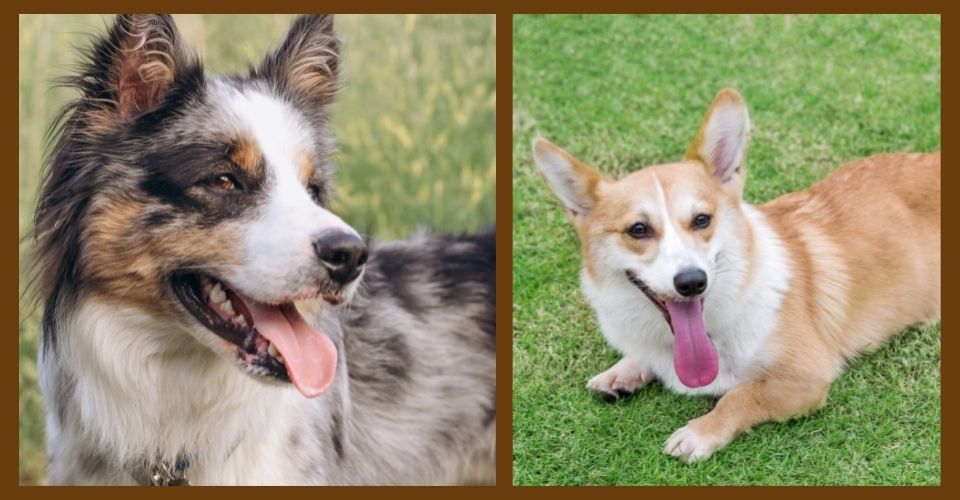Tiny but energetic, the petite bodies of Pocket Pitbulls are brimming with strength and courage. Pocket Pitbull makes a perfect choice for Pitbull lovers who cannot provide for a full-sized Pitbull.
Pocket Pitbull, also known as Mini Pitbull, Miniature Pitbull, and Micro Pit, is nothing but a small version of the American Pitbull Terrier. This pocket petite is not a purebred but rather a hybrid—created by the crossbreeding of the American Pitbull Terrier with Patterdale Terrier. Like their parents, these micro pits exhibit many features of the American Pitbull Terrier.
The idea of getting a miniature Pitbull—Pitbull Terrier in a small size—could be fascinating to many canine lovers, especially Pitbull lovers finding it hard to care for a large-sized dog. But unlike dog breeds for first-time owners, Pocket Pets are not a right match for every other living condition. Therefore, before bringing home a micro pit, you should first familiarize yourself with the breed to make sure that they will make a perfect addition to your family.
Keep on reading to learn all about Pocket Pitbull—origin, appearance, temperament, grooming, training, facts, and much more.
Pocket Pitbull Parent Breeds
Before we start learning about the Pocket Pitbull, it is pertinent that we familiarize ourselves with its parent breeds: American Pitbull Terrier and Patterdale Terrier. Where American Pitbull Terrier is a medium-sized dog, Patterdale Terrier is a small dog breed that originated in Northern England. That said, many breeders are also crossing American Pitbull Terriers with other small dog breeds such as Boston Terriers and French Bulldogs to achieve a smaller-sized pit—Pocket Pitbull. For this reason, due diligence is required on your part while getting a Pocket Pitbull.
Breed Overview
American Pitbull Terrier
Height: 17 to 21 inches
Weight: 30 to 60 pounds
Lifespan: 12 to 15 years
Group: Terrier
Color: All colors except merle
Temperament: : Friendly, strong-willed, courageous, loyal, stubborn
Suitable for: Families with children, families often having guests over, outgoing dog parents
Breed Overview
Patterdale Terrier
Height: 10 to 15 inches
Weight: 11 to 13 pounds
Lifespan: 11 to 14 years
Group: Terrier
Color: Black, red, liver/chocolate, grizzle, black, and tan, bronze
Temperament: Confident, outgoing, playful, independent
Suitable for: Outgoing parents, families looking for a small watchdog
Pocket Pitbull
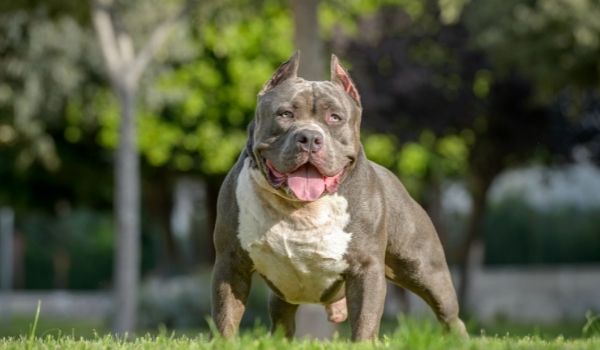
Pocket Pitbulls are a micro version of American Pitbull Terrier—they are smaller in size but have retained all the desirable characteristics of Pitbulls. They are known for their smartness, playful, loyal and affectionate nature. Before we dig deep into the toy Pitbull, take a quick look at the breed overview below.
Pocket Pitbull Breed Overview
Height: 12 to 16 inches
Weight: 11 to 22 pounds
Lifespan: 11 to 13 years
Group: Hybrid
Color: Black, blue, brindle, brown, gray, red, all solid colors with white
Temperament: Highly energetic, courageous, protective, smart, independent, playful
Suitable for: Outgoing dog parents, families looking for a small friendly watchdog
|
Energy: |
Good With Children: |
||
|
Health: |
Good With Other pets: |
||
|
Sociability: |
Good With Strangers: |
||
|
Trainability: |
Protective Nature: |
||
|
Lifespan: |
Exercise Need: |
||
|
Shedding: |
Grooming: |
Pocket Pitbull Origin and History
As discussed earlier, Pocket Pitbull is a designer dog breed resulting from a deliberate cross of American Pitbull Terrier with Patterdale Terriers. Both of these breeds are recognized by the United Kennel Club (UKC) in England but are not recognized by the American Kennel Club (AKC). Where American Pitbull Terriers have an unfortunate history as fighting dogs, Patterdale Terriers were bred to hunt down the small game—specifically foxes and vermin. But the combination of the two dog breeds results in a friendly, courageous, muscular, and smart small dog—Pocket Pitbull. It is known to inherit all the desirable Pitbull attributes but comes in the size of Patterdale Terriers, roughly around two-thirds to half American Pitbull Terriers.
Pitbulls Illegal States
Because of their dogfighting history, Pitbulls are under strict breed-specific legislation (BSL). BSL laws prohibit or restrict keeping Pitbulls in California, Texas, Illinois, Florida, and Colorado. More so, many other States are enforcing BSL.
As far as the origin of the Pocket Pitbull is concerned, there is not much evidence to substantiate any claim about their origin. However, it is widely believed that the petite pits have been naturally occurring for a long time but were only deliberately bred in the late 20th century or early 21st century. The pocket Pitbull dog breed is neither recognized by the AKC nor UKC. Miniature Pits are not even recognized by the International Designer Canine Registry (IDCR).
This is nothing to be alarmed about—it is only because the breed is quite new. You should not let this keep you from getting a Pocket Pitbull as they are amazing family dogs and are loved by many canine lovers, especially Pitbull lovers who cannot provide spacious room for a usual American Pitbull.
Did You Know?
When crossbreeding American Pitbull with Patterdale Terrier to create a Pocket Pitbull, the former is always the mom and later plays the role of dad. Pocket Pitbulls are mostly fifty-fifty cross of both parents because multi-generational breeding of micro Pits would increase the risk of certain breed-related congenital health issues.
Pocket Pitbull Puppies
Pocket Pitbull puppies don’t—shouldn’t—have a Pocket Pitbull as a parent as this would increase their chances of inheriting breed-related genetic health issues. Therefore, Pocket Pitbull puppies are mostly 50/50 cross of Patterdale and American Pitbull Terrier, where the latter is always the mother and the former the father. More so, if they were created by crossing American Pitbull Terrier with some small dog breed other than Patterdale, resulting Pocket Pitbull puppies may have serious health and temperament issues. Therefore, you should make sure that what you are getting is a fifty-fifty cross of American Pitbull and Patterdale.
Pocket Pitbull puppies are cute and widely sought after. Therefore, when loving dog parents finally find a Pocket Pitbull puppy, they overpamper him—always allowing him to get his way—resulting in their tiny pet developing a Small Dog Syndrome. Because of their cuteness and small stature, their parents allow them to misbehave and be the boss of the house. This looks cute, but this is a slippery slope, making your dog develop behavioral issues and grow up to be an independent and stubborn adult.
Worry not, if you do not want your Pocket Pitbull puppy to develop behavioral issues, you can train and socialize him to be a loving and playful family pet with a balanced temperament. But to do that, you will have to stop spoiling him and properly train him (see more on training in the respective section below).
Pocket Pitbull Appearance
Do not get deceived by their names, Pocket Pitbull would not fit in your pocket. They are not teacup dogs but rather small dogs—they have an average height of 12 to 16 inches and weigh around 11 to 22 pounds. Pocket Pitbull, like the American Pitbull Terrier, is stockier, solid-built, and has well-defined musculature. They also have broad-sized heads and strong jaws like their American Pitbull parent.
However, unlike Pitbull Terrier, their skull is a bit wedge-shaped, and the muzzle narrower. They have a thick muscular neck, which gradually widens towards shoulders. They have a wide and muscular but a lower chest. Their legs are strong and bulky but small in size. While their nose is mostly of blue, black, or brown color, their eyes are typically either brown or amber.
Differences Other Than Size between Pocket Pitbull vs. American Pitbull Terrier
Micro Pits are a bit leaner than standard Pitbulls. Pocket Pitbull’s skull is slightly more wedge-shaped. Pocket Pitbull’s muzzle is narrower than that of standard Pitbull’s. Micro Pits’ ears sit a bit high up on their head. As compared to the long ears of American Pitbull, Pocket Pitbulls’ ears are of short to medium length.
Pocket Pitbull Temperament
Both of Pocket Pitbull Parents breeds have a history more aligned with aggressive dog breeds—where American Pitbulls history is marred with dogfighting, Patterdale Terriers were used for chasing and killing small game. Because of this, many people believe that Pocket Pitbulls also have aggressive hot blood running through their veins. While this is true, Pocket Pitbulls can make a great family dog with a playful and friendly temperament if they are properly trained and socialized in early life.
With proper training and socializing, they can become friendly and easy-going family dogs. They love to keep their love and devotion for their loving owners. But still, they won’t be much welcoming to strangers and are also not much amicable towards other dogs. However, if introduced and socialized with dogs of their size or larger than them, they can learn to live with them amicably. But still, even with proper socialization, it is not safe to keep them with cats and dogs smaller than Pocket Pits. The petite pits just have too much of a prey drive and hunting instincts that it is best we don’t let them be alone with smaller pets, just to be on the safe side.
Two Main Reasons Underlying Pocket Pitbull Aggression
Pocket Pits are very protective of their owners, so when they perceive a potential threat, they act aggressively out of fear to defend their owners or themselves. They are not getting ample exercise to expend their energy or are being mistreated by their parents. Pent-up energy and anxiousness lead to the development of behavioral issues.
They can be playful and friendly with the children in the family, but given that Micro Pits are strong and can mistakenly knock over a kid while playing, they should never be left alone with kids without supervision.
Pocket Pits are high-energy dogs, and they need a certain amount of exercise to expend their energy (exercise requirements are discussed later in the blog at length). If they are not getting ample exercise, their pent-up energy could lead to behavioral issues and increase the tendencies of being aggressive and dominant.
Caution!
While usually Pocket Pitbulls are developed by the crossbreeding American Pitbull Terrier with a small Patterdale Terrier, sometimes breeders cross American Pitbulls with other small dog breeds like Boston Terriers or French Bulldogs. In this case, resulting Pocket Pitbulls will have different temperaments and health concerns. These miniature pits may have more aggressive tendencies and act as territorial and dominant.
Pocket Pitbull Coat
While most of the Pocket Pitbulls have a smooth short coat with no undercoat, it is not always the case. Sometimes these pooches have a coarse coat with a dense undercoat. This is because it is a mixed breed—where its American Pitbull parent has a smooth short coat with no undercoat, Patterdale Terriers have a coarse coat with a dense undercoat. So when they are crossbred, resulting petite pups can inherit the coat of any of the parents.
Smooth single coat or coarse double coat, Pocket Pitbulls come in a variety of colors. Most common Pocket Pitbull coat colors are black, blue, brindle, brown, gray, and red. While some Petite Pits have a solid color coat, others may have markings on their coat.
Pocket Pitbull Grooming
Pocket Pitbull grooming is dependent on the nature of their coat. If a Pocket Pitbull puppy has inherited the smooth single coat of its American Pitbull parent, its grooming will be a lot easier—it will be shedding very little, and weekly coat brushing would be sufficient. However, if your Pocket Pitbull has the coarse double coat of Patterdale Terriers, it will be shedding a lot more, and you will have to brush their coat at least twice or thrice a week.
Given that Pocket Pitbulls shed moderately, they are not one of the hypoallergenic dog mixes. However, by brushing their coat regularly, you can control the shedding. The brushing session should not take more than three to five minutes as they have a short coat, which can be easily and quickly groomed with either a slicker brush or a grooming glove. This will help get rid of the loose and dead hairs from the skin.
In addition to regular brushing of the coat, Pocket Pitbull teeth also need to be brushed regularly—at least twice a week—using dog toothpaste (never a human toothpaste). But given that Pocket Pits have strong teeth, they don’t need to be brushed daily like that of Akita Shepherds. Teeth brushing once or twice a week is enough for Pocket Pitbulls to avoid dental decay and maintain healthy teeth.
Besides brushing—teeth and coat—Pocket Pitbulls are easy to groom. One can say that there is no other grooming required as Pocket Pitbulls don’t need to be bathed more often, few baths a year are sufficient for them. However, if they have made a mess by getting themselves into something stinky, you may have to bathe them more often.
Similarly, if your Pocket Pitbull has any skin allergies, you will have to bathe them more often. In case your Pitbull gets stinky, you can use a vet-approved oatmeal dog shampoo—your tiny pet would love its smell. And if dry skin has been irritating your Pit, you should use one of the vet-approved dog shampoos for dry skin. Other than that, Pocket pet owners are advised to check their pups’ ears and eyes for any signs of infection or debris. Plus, their nails need to be trimmed regularly.
Pocket Pitbull Grooming Tip!
Get your miniature Pit used to grooming sessions—bathing, nail trimming, teeth brushing, etc.—at an early age so that grooming sessions don’t become a headache at later stages in life.
Pocket Pitbull Exercise Requirements
Pocket Pitbulls might not be listed with other high-energy dog breeds, but they are highly active and high-energy dogs. Meaning that your athletic and agile miniature Pit would require a lot of exercise—at least an hour of vigorous physical activity daily. Having two to three small exercise sessions are better than having one hour-long session.
The exercise sessions should not only be limited to walking on a leash. But your petite Pit should be allowed to go off the leash—run around, and play with interactive toys or have interactive play sessions with you. You Pocket Pitbull would love to play fetch with you or Competition Disc. In addition, you can also take your micro Pit along with you for swimming—while some of them enjoy swimming, others may find it difficult. So, you should only let them play in shallow water, and that too under supervision.
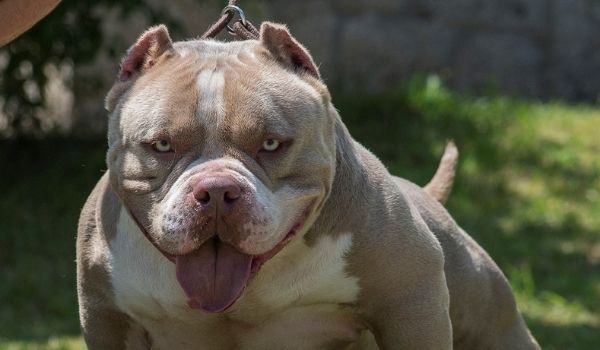
Given that Pocket Pits are smaller in size, many canine lovers think that they would make a perfect apartment dog. But where they can easily live in apartments if they are getting ample exercise, they are the happiest if they have some lawn or small ground where they can go off-leash and run.
Pocket Pitbulls are Sensitive to Heat and Sun
Pocket Pitbulls are a bit sensitive to sun and heat, especially Pits with white or light fur. They are more susceptible to getting affected by the ultraviolet rays coming from the sun, increasing the chances of the development of skin cancers. Therefore, when taking your Pit out in the sun, you should use Sun Protector.
Pocket Pitbulls Diet and Nutrition
Pocket Pitbulls are small dogs and do not require a lot of food to eat. A healthy Pitbull Patterdale Mix would not have any special diet and nutrition requirements. So as with other dog breeds, you can feed your micro Pit any high-quality dog food. As micro pits are energetic and agile like their Pitbull parents, you can check out the best dog foods for Pitbulls to decide which would work best for your little friend.
Moreover, Pocket Pitbulls are also prone to food allergies in addition to skin allergies, so you should be careful when offering human food like lima beans, Brussel sprouts, turkey, etc., to your tiny Pit for the first time.
How Much You Should Feed Your Pocket Pitbull?
There is no absolute answer to this question as various factors are involved. For instance, the nutritional requirements of dogs vary depending on their life stage—puppyhood, adulthood, or seniorhood. Similarly, other factors like activity level, size of the dog, etc., are also involved here. We advise that you get an opinion from your vet about how much you should be feeding your dog.
Pocket Pitbulls are Prone to Overeating
As stated in the beginning, Pocket Pitbulls are tiny but powerful—they are brimming with energy. Therefore, they can eat more than other calmest dog breeds of similar size. While we love to watch our dogs devour their food, it becomes a problem when they overeat, especially when they are not getting ample exercise. This overeating leads to Pocket Pitbulls gaining extra weight and ultimately getting obese, which in turn increases the risk of weight-related health issues.
Therefore, mini Pit owners should be careful about the caloric intake of their dogs. If your micro Pit seems to be gaining extra weight, you should cut down on its caloric intake. And if it seems to be getting thin, you should increase its caloric intake. And never forget getting a vet’s opinion.
Pocket Pitbull Training

When it comes to training and socialization of Pocket Pitbulls, owners have little to no room to err. Pitbulls are banned in many states in the U.S. because of their dogfighting history. Therefore, if you are keeping an itsy-bitsy Pit, you will have to make sure that he is on his best behavior all the time. This is only possible if you start your min Pit’s training and socialization at an early stage.
These tiny Pitbulls are highly energetic and have a tendency of being independent, and act stubborn at times, which can only be addressed with early training and socialization. Pocket Pitbulls are highly intelligent, so training them would be pretty seamless. We advise that positive reinforcement and reward-based training methods should be employed when training Pocket Pitbulls.
However, if your Petite Pit has a weight problem, you can effectively train your dog without treats by using verbal praise, belly rubs, or toys, etc., as a reward.
To get the best result from your Pit’s training sessions, you must be patient and persistent. You will have to build a rapport with your dog for him to start listening and obeying you. You can build such rapport and connection with your tiny Pit by early socialization. Let the little Pit interact and develop a strong bond with every family member. Once your Pitbull understands what is being asked of him, he will comply and learn when rewarded with praises and treats for correctly following instructions.
Given that Pocket Pets are highly protective of their loving parents, you can give them guard dog training, and they will always alert you and protect you if they see any potential threat coming your way.
Remember that even a well-trained Pocket Pitbull can develop behavioral issues if he is not getting ample exercise to expend his pent-up energy. In that case, you may see your little dog barking at nothing. This bark can mean two things: one, your dog is not getting ample exercise, and two, he is trying to alert you about some threat.
Pocket Pitbull Lifespan
Pocket Pitbulls have an average lifespan of 10 to 13 years. That said, much is dependent on their overall health, diet and nutrition, availability of exercise requirements, and lifestyle. If you want your Pocket Pitbull puppy to live well beyond the average lifespan of Pitbulls, you should bring home a mini Pit puppy after due diligence—a 50-50 cross between American Pitbull and Patterdale Terrier.
After bringing home a healthy mini pit, you should ensure that he is getting a balanced diet, where all his nutritional needs are being met. Plus, make sure your little canine friend gets ample daily exercise—more than just walking around the block. Last but not least, you should never miss an annual vet visit.
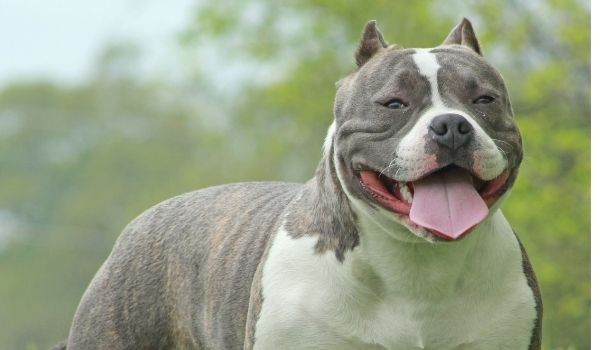
Pocket Pitbull Common Health Issues
It is widely believed that hybrid dog breeds like Shepkita, Yorkipoo, Great Shepherd, and Borderdoodle, etc., are predisposed to certain health issues. But when it comes to Pocket Pitbulls, it is not the case—Pocket Pitbulls are believed to be healthier than their parents. That said, it is not always the case; while most pocket Pitbulls are healthy, some can be subject to developing any health issue that either of their parents might have. Below we have laid out the most common health issues that Pocket Pitbulls are predisposed to.
| Major Health Issues | Minor Health Issues |
| Joint Dysplasia (hip and elbow) | Hyperthyroidism |
| Genetic Heart problems | Skin Problems |
| Intervertebral Disc disease | Eye Problems |
| Cerebellar Abiotrophy (Ataxia) | Allergies |
| Brachycephalic Airway Syndrome |
Pocket Pitbull Major Health Issues
Pocket Pitbulls are mostly hardy and healthy, but they are subjected to several major health concerns. Below we have briefly discussed the major health concerns that our pocket dogs are susceptible to.
Joint Dysplasia
While it is widely believed that joint dysplasia, especially hip dysplasia, occurs only in large dog breeds, it is not the case. Small dog breeds like corgi puppies and mini Pits may also experience joint dysplasia. Joint dysplasia occurs when dogs experience abnormal growth—bones grow at a faster pace than muscles. Pocket Pitbulls experience hip dysplasia as well as elbow dysplasia.
In addition to improper growth, weight gain, exercise, an inadequate diet, and nutrition may also contribute to the development of hip and elbow dysplasia in Pocket Pitbulls. Therefore, it is crucial that before adopting a Pocket Pitbull, you confirm from the breeder that the parent dogs don’t have joint dysplasia. Besides that, you will have to feed your canine friend those dog foods that support healthy joints and improve the dog’s ability to walk and run around without any pain.
Genetic Heart Problems
Pocket Pitbulls are also prone to developing heart problems such as mitral valve disease and dilated cardiomyopathy. In mitral valve disease, Pocket Pit’s heart valves leak, and the blood is pumped in the backward direction. On the other hand, in dilated cardiomyopathy, the pup’s heart is just too weak, resulting in heart muscle failure. In this condition, the heart faces difficulty in pumping the required amount of blood throughout the body. While sometimes, Pocket Pitbulls are born with these congenital heart issues, in other cases, they may develop heart problems over the years.
Intervertebral Disc Disease
Intervertebral disc disease (IVDD) occurs due to the degeneration of the disc between the spinal bones, which results in the loss of feeling in a limb, limb functions, and eventually paralysis. The most commonly affected areas of the spine are the lower, middle, and neck regions.
Cerebellar Abiotrophy (Ataxia)
Cerebellar Abiotrophy, also known as Ataxia, is a congenital neurological disorder in dogs. In this health condition, part of the brain (cerebellum), which is responsible for maintaining posture and coordinating movements, is targeted. Dogs with short spines and Ataxia need extra care and attention from their loving parents.
As this is a progressive disorder, it gets worse with time. Where dogs with mild deficits can live with conservative management, when it leads to paralysis, surgery is the recommended treatment choice.
Brachycephalic Airway Syndrome
Pocket Pitbulls have short noses, making them susceptible to brachycephalic airway syndrome, a condition where dogs suffer from upper airway abnormalities. These dogs experience difficulty breathing due to increased airway resistance. Many brachycephalic dogs find it easier to breathe from their mouths instead of their nose.
Your Pocket Pitbull breathing noisily during his exercise sessions, snorting when excited, and snoring when sleeping, are some of the signs of brachycephalic dogs. Dogs suffering from this condition may also faint or collapse during their exercise sessions. This is why we recommend exercising your dogs in small sessions.
Pocket Pitbull Minor Health Issues
In addition to the major health issues, mini pits also suffer from many minor health issues, including hyperthyroidism, skin problems, eye problems, and allergies.
Hyperthyroidism
In this health condition, mini Pitbulls’ thyroid gland fails to secrete ample thyroid hormone, resulting in a slowed metabolism. This, in turn, leads to lethargy, poor skin health, high-blood cholesterol, increased weight gain without any increase in appetite, and increased susceptibility to ear and skin infections. According to the VCA hospital, hypothyroidism is not curable but can be treated with thyroid replacement hormone.
Skin Problems
Skin problems are unique to Pocket Pitbulls. Their skin is prone to bacterial, fungal, and parasitical infections. Where some mini Pits suffer from fungal skin problems, others experience dry skin. The former can be treated with vet-approved anti-fungal vet shampoo, dry skin can be treated—and prevented—with a dog shampoo for dry skin.
If you suspect that your dog is developing any skin conditions, visit a vet, and they will recommend a suitable way forward.
Eyes Infections
Like other dogs, Pocket Pitbulls can also suffer from various dog eye infections. Mini pits are prone to developing several eyes conditions such as cataracts, cherry eyes, conjunctivitis, and corneal ulcer. These eye problems can be painful for your mini Pit and thus require immediate treatment. If left untreated, the dog may experience deteriorating eye vision and even blindness.
Multi-generational Pocket Pitbulls are more prone to being unhealthy
Breeding two mini Pits together or an American Pitbull with a Pocket Pitbulls would result in a mini Pit that would be more susceptible to inheriting health issues as compared to the first-generation Pocket Pitbulls.
How Much Does a Pocket Pitbull Puppy Cost?
Pocket Pitbulls are a bit expensive than either of their parent breeds. A Pocket Pitbull puppy would cost you somewhere between $1500 to around 2500. They are not yet recognized by the AKC or UKC, but their popularity is on a non-stop upward curve. Given that many Pitbull lovers experience difficulties in providing spacious space and meeting other needs of standard-sized Pitbulls, they are turning to small-sized Pitbulls—Pocket Pitbulls.
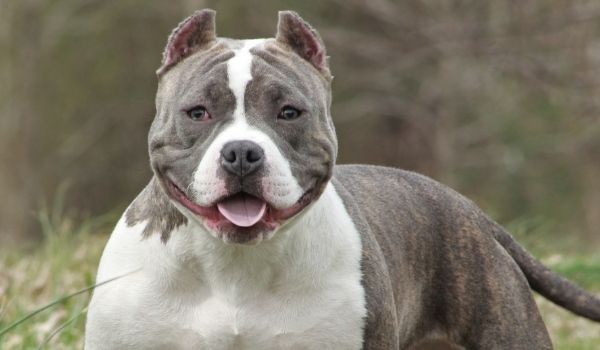
However, while getting your mini Pit, you will be pretty excited, but you mustn’t let the cuteness of the pup cloud your judgment—you may end up bringing home a Pocket Pit that is not first-generation or a 50-50 American Pitbull and Patterdale cross. Many breeders are creating Pocket Pitbulls by crossing Pitbull with Boston Terrier and French Bulldogs. These little pits are equally adorable, but they may be more susceptible to health issues and have a different temperament.
If you are unable to find a Pocket Pitbull, you should not get one from a Puppy mill or a backyard breeder. Instead, you should visit your local animal shelters and breed-specific rescue—you may get lucky and bring home a mini Pit by just paying a nominal fee for the paperwork.
Adopt Not Shop!
Things to Consider Before Getting a Pocket Pitbull
Pocket Pitbulls are not like other dog breeds for first-time owners; they need specific living conditions. Therefore, before you bring home a Pocket Pitbull, you should consider the following things.
Things To Consider When Getting a Pocket Pitbull
Interesting Facts About Pocket Pitbull
- They are known by various names. Below we have listed some of the most popular Pocket Pitbull monikers.
| Miniature Pitbull | Teacup Pitbull |
| Dwarf Pitbull | Tiny Pitbull |
| Micro Pit | Mini Pitbull |
| Pitterdale | Teacup Mini Pitbull |
| Pitbull Patterdale Mix | Pocket bully |
- They won’t fit in your pocket. Do not be fooled by their names; they are a small dog breed but not a teacup dog. They are around 12 to 16 inches tall and weigh around 11 to 22 pounds.
- Some mini Pits have a single and other a double coat. While some Pocket Pitbulls have a single coat (inheriting from American Pitbull parent), others have a double coat (inherited from their Patterdale parent).
- Pitbulls are banned in some States. Due to their history of dogfighting, many breed-specific legislations (BSL laws) prohibit or restrict keeping Pitbulls in California, Texas, Illinois, Florida, and Colorado.
- Pocket Pitbulls are more expensive than their parent breeds. This designer dog breed is quite rare as compared to either of its parent breeds and is widely sought after, rendering them more expensive than their parent breeds.
- Pocket Pitbulls are slightly longer than tall.
- Pocket Pitbulls are fifty-fifty cross of American Pitbull Terrier and Patterdale Terrier. Crossing first-generation Pocket Pitbull with either Patterdale or Pitbull would increase the risk of certain congenital health issues, so reputable breeders stick to fifty-fifty cross.
- In the fifty-fifty cross, the mother is always American Pitbull and Patterdale, the father. This is how we get a small-sized Pitbull—Pocket Pitbull.
- Pocket Pitbulls can also be created by crossbreeding American Pitbull Terrier with Boston Terrier or French Bulldog. But these Pocket Pitbulls tend to have a different temperament and personality and are also more prone to health issues.
- Pocket Pitbulls make an excellent watchdog. They readily bark to alert their owners of a potential threat, and if the threat is imminent, they will put their life on the line for you.
- They are prone to overeating. They eat a lot more than other dogs of the same size due to their high-energy nature. But they are also prone to overeating and growing obese.
- They are super active. Don’t be deceived by their small size—they are brimming with energy. They can make a great running companion.
Pocket Pitbulls: Pros and Cons
| What’s Best About It |
|---|
|
Easy to train—thanks to the intelligence of both of its parent dog breeds
Highly energetic—make great running companions Easy to groom—require only coat and teeth brushing twice a week and a few baths over the year Overall a healthy dog breed with an average lifespan of 11 to 13 years Great watchdog—readily bark to alert their parents when they spot a potential threat and are ready to put their life on the line for their loving owners |
| Flaws But Not the Deal Breakers |
|---|
|
Expensive than either of its purebred parent dog breeds
Highly energetic and high exercise requirements—not a perfect choice for apartment dwellers They are prone to diseases that either of the parent dogs may have Misperceiving threats could lead to excessive barking—barking whenever someone unfamiliar is around. Not a perfect choice for families with children and other pets in the house. |

